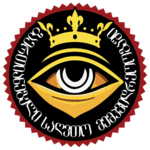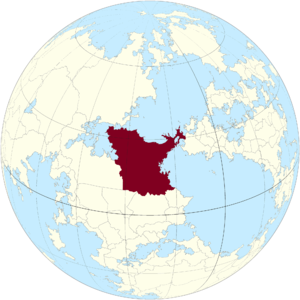Anat Tahan
| Anat Tahan Anat Tahan | |
| Flag | Coat of arms |
|---|---|

|

|
| Motto: In the Radiant Glow of the Eternal Sun, Industry Blooms and Fields Flourish: United in Divine Legacy, Guided by Tradition. | |
| Anthem: In majesty, we rise | |
| Locator map | |

| |
| Capital city | Kashghir |
| Largest city | N'Asra |
| Official language | Tahani language |
| Other languages | Chala |
| Ethnic group | Tahana |
| Religion | Izhaic |
| Demonym(s) | Tahanian |
| Government | |
| Government Type | TBD |
| TBD | Vaso Bakhia |
| Prime Minister | Vasil Arveladze |
| Legislature | TBD |
| Establishment | |
| Event Name | Event Date |
| Area | |
| Total | 5,661,475 km2 |
| Water % | 2.1% |
| Population | |
| Total | 232,978,000 |
| Density | 41.15/km2 |
| Economy | |
| Economy type | Planned Market |
| GDP (total) | Ꞡ 3,563,617,174,134 |
| GDP per capita | Ꞡ 15,295 |
| Currency | Crescent (Crescent_currency.png) |
| Inequality index | 000 |
| Development index | 000 |
| Other information | |
| Time zone | +1, +2 |
| Driving side | right |
| Calling code | +74 |
| Internet code | .tn |
| Nation number | 74 |
The Anat Tahan (Izhaic: Nuft Tahan, also known as the "Sole Empire of Izha") is a complex empire of disparate states symbolically united in perpetual divine union under the Izhaic religion. The nation encompasses most of northern Tharna as well as portions of Anaria and Davai. Its strategic location astride the Afti Straits makes Anat Tahan a gateway between the Ovestan and Sinnian seas as well as between Anaria and places west.
Etymology
The word "Anat" stems from the old Maphurian word "Makanat," meaning "great in the eyes of God." "Tahan" comes from the Tahana people, who trace their origins to the highlands of central Terotagyneka, later expanding westward to settle around what is now known as the "Es'Tahan Sea" ("Es'Tahan" is ancient Kedan for "great convergence"). The first preserved mention of the name "Maphuria" is in the "Biblio Diplomatiko Tis Aftokratoria," a political geographic handbook written by the Parnathian emperor Talthybios IV in 5366. It described the Maphur as a "curious yet fertile civilization which lies between two great rivers at the heart of the continent... inhabited by a handsome dark-skinned people of strange garb and bizarre ritual."
History
Pre-History and Antiquity
Pre-Imperial Maphuria
Details of pre-imperial Maphuria.
Pre-Imperial Tahan
Details of pre-imperial Tahan.
Consolidation
Details on the consolidation of Anat Tahan.
Apex and War of the Medio
The empire reached its greatest territorial extent to date in 7438, just prior to the outbreak of the War of the Medio. An intense power struggle had been festering between the Tahan monarchy and the monastic high council in southern Maphuria, which had perpetual hopes of unifying the entire empire under Maphurian-based religious rule. When the Tahan emperor sent forces eastward to protect its western Anarian holdings from conflict, the religious order seized its chance to dispatch a large force to the capital in a move to overthrow the Tahan monarchy. The Tahan army was recalled and managed to rout the Maphurian force, thwarting the coup but at great cost. The high-priestess was taken hostage, religious sites occupied, and the monastic citadel in Nechouba besieged. Simultaneously, unrest due to the war and other converging factors, including oppressive taxation, foreign intervention, and religious persecution, resulted in the loss of most of Tahan Anaria to various nationalist movements and even neighboring states.
Inter-War Period
Details of the inter-war period.
Pan-Anarian War
Details of the Pan-Anarian War.
Post-War Period
Details of the post-war period.
Geography
Details of the geography, including climate and flora & fauna.
Administrative Divisions
Details on realms, provinces, imperial administration, municipalities, districts, estates, and bagkhas.
Politics
Details on the political structure and government of Anat Tahan.
Law
Details on the legal system of Anat Tahan.
Foreign Relations and Geopolitics
Anat Tahan takes a manifest destiny view of northern Tharna and still nurses some latent dreams of recovering its lost lands in western Anaria, though many consider any non-diplomatic pursuit of the latter to be counterproductive. This reflects a shift in stance on territorial expansionism toward northern Tharna and the Abakhan basin. There are, however, rumors that a colonial venture is in the works to compete with Anarian nations in eastern markets. The government has complex diplomatic ties at various levels with the ever-transforming tribal empires of inner Tharna, which it often uses to orchestrate scenarios to benefit the expansion of church operations, proselytizing, and providing opportunities to secure areas of strategic interest for trade and resources. Other defensive concerns include containing their historic arch-rival Hayrand, fending off Anarian colonial aspirations in Tharna, and containing guerilla-type resistance movements in the northwest and tribal politics in the south.
Syndikati
The Sindikati is an expansive trade guild that operates a powerful array of special land, air, and naval forces. It often advises the emperor on economic matters and sometimes plays a mediative role between religion and state. Profit is a primary driver of the organization, which controls the movement and exploitation of Anat Tahan's natural resources and luxuries, plus the trade routes between the Phasian Basin and central Davai. Originally established as the Syndicate Toward Societal Order and Unity, its original purpose was to assist in governing imperial Anarian possessions. Since then, it has grown immensely in power, building and maintaining forts and settlements in frontier areas or areas designated under its jurisdiction, levying taxes, as well as recruiting forces from indigenous inhabitants. It has a wide variety of military capabilities but is very specialized for its purposes.
Governance
The government of the Syndikati is made up of the House of Nobles, which consists of the patriarch from each of the five hereditary principalities. These titles were originally granted by the emperor. Each principality also houses a monastery to dispatch missionaries and assist in civil administration. The other branch of government is the meritocratic Kabineti (Cabinet) of between 15 and 21 members, promoting from within as often as not and will vote to hire prominent thinkers, strategists, and economic geniuses often from Anaria. There is also the Advisory Council of Investors made up of a representative from each of the 21 most important individual investors from within the empire only.
Military
Details on the military structure and capabilities of Anat Tahan.
Economy
Details on the economic structure, including agriculture, transport, and key industries.
Demographics
Language
Languages spoken in Anat Tahan include Tahani, Maphurian, and Parnethi.
Religion
Religion in Anat Tahan is predominantly Izhaic, a grouping of monotheistic religious systems whose followers submit to a wrathful and almighty god who must be pleased and appeased through rituals and by strictly following his law as written in the sacred texts. They believe that unless their god is kept content, he will freely punish them. The faith is expansive, and followers are commanded by doctrine to bring new followers into the fold, peacefully and/or forcefully, from heathen beliefs, and that only by accepting Izha as their faith will they be able to achieve transcendence in life and after death in paradise. Its followers also believe all heathens and sinners will perish into some sort of hell after death.
In Anat Tahan, it is generally seen to be divided into two primary sects: Kükenleri, meaning "predominates in the south and west," is considered the more orthodox sect. Kükenleri Izhaics do not believe other gods exist at all. Aluaduththeia, meaning "truth," is the primary eastern sect and is slightly more tolerant of outsiders. It is seen as a necessary evil by the mother church to act as a virtual buffer to Orkanan as well as a more approachable "gateway" sect for incoming converts. While Izhaic doctrine states that there is only one god, the Aluaduththeians generally believe that other deities may exist but are merely underlings to Ilah, the one true god.
Culture
Details on art, architecture, literature, philosophy, religion, music, society, gastronomy, and sport in Anat Tahan.
Monastic High Council
The Manfas Betaba (Spirit Fathers) or Monastic High Council is a furtive group of elite monks. Considered the second most powerful entity in the empire, they are the keepers of the Song of the Sun, the Ilah’taqana. This is the sole authentic Izhaic text of which there may never exist more than one copy. Extremely ancient, it is inscribed upon the walls of the labyrinths near Neouchba and is said to stretch for hundreds of kilometers. As sole interpreters of scripture, members of the council advise the emperor by proxy on religious matters and are responsible for the selection of the Sun Mother and Moon Daughter from a pool of eligible high priestesses. They also have the pleasure of choosing the Tahadsa-Mati (Giftchild offering) during the Kuaf-Malut Rising or Renewal Festival for the appeasement of Tir.
Deda Magha
The Deda Magha (Sun Mother) is the highest of all priestesses. She represents the mother of Ilah (Alir) which gives life to all of Gotha. She serves as a mouthpiece for the High Council. Most of her duties, while high-profile, are largely ceremonial, though she holds immense de facto political power due to her perceived status as mother of god and legitimizer and symbolic wife of the emperor. She keeps her court at the great ziggurat and massive temple complex at Nasra.
Akafawaba
The Akafawaba (Universal Father) is represented by the emperor as the symbolic husband of the Deda Magha and father of Ilah (Alir).
Science
Details on the scientific achievements and developments in Anat Tahan.
Music
Details on music and musical culture in Anat Tahan.
Society
Details on social structure, customs, and daily life in Anat Tahan.
Gastronomy
Details on the cuisine and food culture of Anat Tahan.
Sport
Details on popular sports and sporting culture in Anat Tahan.